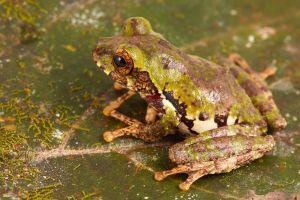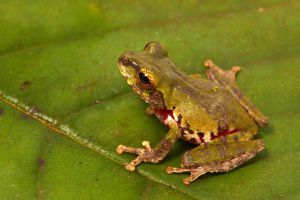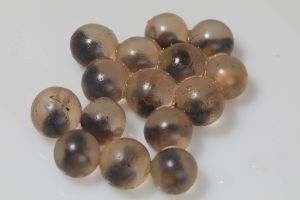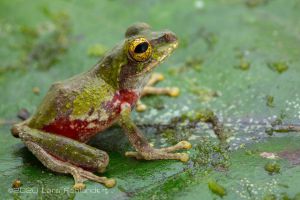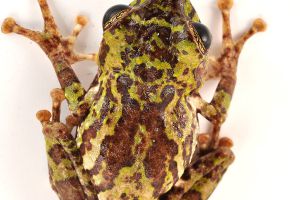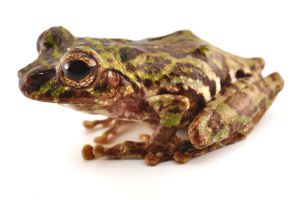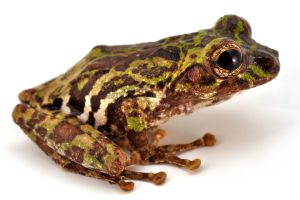
Frogs of Borneo

Frogs of Borneo

Frogs of Borneo

Frogs of Borneo

Frogs of Borneo

Frogs of Borneo

Frogs of Borneo

Frogs of Borneo

Frogs of Borneo

Frogs of Borneo

Frogs of Borneo
Bornean Families
Philautus:
kerangae
Kerangas Bush Frog
Philautus kerangae was first described by Dring (1987) from “Kerangas Camp,” Gunung Mulu National Park, Sarawak, at an elevation of about 200 m a.s.l. Although most frequently encountered in lowland and hilly primary or old secondary forests, the species occurs at elevations up to 1200 m a.s.l. It shows a particular preference for kerangas (heath) forest—hence its name—probably due to the presence of Nepenthes pitcher plants that characterize this nutrient-poor habitat. Recent observations from western Sarawak on iNaturalist suggest that the species is widespread.
Adult males measure up to about 33 mm in snout–vent length, while females reach around 43 mm. The head is broader than long, and the canthus rostralis is distinct and gently curved. The nostrils are slightly elevated. Both finger and toe tips bear well-developed adhesive disks. Webbing between the fingers is rudimentary, while toe webbing is moderate and extends to the disks of the third and fifth toes. The outer metatarsal tubercle is absent. The dorsal skin texture is shagreened to very weakly tuberculate. A curved supratympanic fold extends from the eye toward the arm. The throat is wrinkled, and the rest of the underside is areolate. The pupil is horizontal and elliptical. The eardrum is visible.
Dorsal coloration is variable, typically green with extensive brown markings, sometimes forming an X on the dorsum; specimens with more turquoise color rather than green have bee spotted. The lower flanks are white with dark brown markings that often form a striped pattern. In some individuals, the groin and armpit regions are tinged with reddish hues. The iris has a bronze background with a conspicuous dark reticulation, and the pupil is bordered by a thin orange ring.
According to Dring (1987), this species deposits its eggs inside the pitchers of Nepenthes bicalcarata. Each clutch consists of 6–8 eggs, and observations suggest that males may guard their clutches. Dring noted that larval development and metamorphosis occur entirely within the egg, and the metamorphosed froglet hatches at a body length of about 8 mm. Males are typically found perching 2–5 m above the ground on leaves in trees. Their calls consist of a series of harsh, loud notes.
Version tracking
-
09.12.2025
22.10.2025
fotos by Lars Fehlandt added
updated
